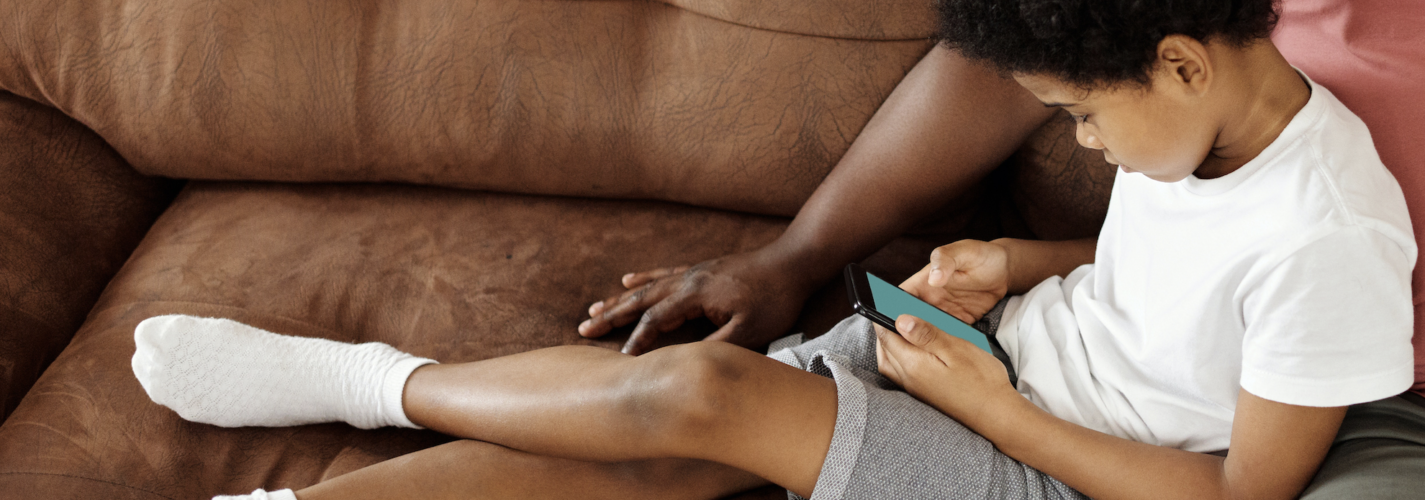SOS: Save Our Black Children, End Educational Trauma
By Triasia Givens
Content Warning: This piece briefly but overtly deals with self-harm, including suicidal thoughts.
“This is how I’m going to do it, mommy,” he says, piercing his arm with the 6-inch butcher knife. “I hate my skin.”
“Everybody hates me in school! The teacher hates me!” He screams with tears streaming down his face.
“Put that down. I love you!!!”
This is not a scene from a movie. This was my life.
In an oppressive education system, the pressures of being a Black boy are overwhelming. It brought my 7-year-old baby to form thoughts—and actions—of ending his life. My baby literally fought for his life, because he felt he was not good enough.
This is not only my story; this is a story of many black children and their families. Black children, ages 5-11-years-old, have the highest rate of death by suicide, according to a national study published in the American Medical Association’s JAMA Pediatrics journal. As a mental health practitioner, professional family advocate in Minneapolis, and a member of multiple parent leadership and equity groups, almost all families I’ve worked with have dealt with this. I’d estimate nearly 80% of the young men I’ve worked with have had suicidal ideations as a result of racial tensions at school.
Imagine walking into a place every day where you don’t see yourself, you don’t feel safe, and not being given any respect. Everyone looks down on you, everyone expects you to fail, and many are scared of you. This is how our Black children feel when they walk in their schools. The staff and teachers do not look like them. The majority of educators in Minnesota are white. One out of every 20 teachers is a person of color, compared to one out of every three students. The disparity is egregious, and the treatment our children experience as a result of this disparity is traumatic.
Teachers dehumanize and criminalize our Black children. Educators’ white supremacy often goes unchecked, increasing the Pygmalion effect on Black children. High expectations lead to better performance, and low expectations lead to worse—both lead to a self-fulfilling prophecy. To be clear: This is traumatic for our children. And it creates high-risk behaviors in students, including suicidal ideations.
One Clear Way to Make Change—Backed by Research
Minnesota has some of the largest achievement gaps by race, ethnicity, and socioeconomic status in the nation. Black children in Minnesota have the lowest reading levels in the state and the second-lowest in math; they and are eight times more likely to be suspended or expelled. In Minneapolis Public Schools, where my son attends, Black children’s immense potential is squandered.
One way to close these educational gaps is to make children and families feel wanted and respected in the schools, substantially altering the expectations educators have for our children. Black children must feel valued.
Add Black History to the American History Social Studies curriculum. Perpetuate positive images of Black and brown people. Dr. Welsnea Asart, a psychiatrist specializing in cross-culture, agrees: Positive imaging can help increase self-esteem in Black children. He explains:
In psychiatry, we talk about risk factors for particular disorders. However, there are also protective factors that can minimize or diminish the impact of risk factors. Exposure to anti-black bias is a risk for internalized racism and low self-esteem. However, pro-black images can protect against risk (Brown, 2016.)
In this case, anti-Black images are textbooks that do not display any imagery or content about Black History. In fact, those texts only show imagery of Black people as slaves.
Black People, We Have to Save Our Black Children
The Minneapolis Public School board is discussing Tuesday whether to mandate ethnic studies as a graduation requirement, and they’ll likely have a final vote in November. But that is not what the community has asked for. This mandate only sends the message to our children that we are separate from American History, further creating the inferiority complex that perpetuates white supremacist ideologies. The only way to eliminate this perpetuation completely is by better representing Black History to the existing American History curriculum in social science courses. This will increase the self-identity and self-value of Black children. Seeing stories of themselves in books as kings and queens, entrepreneurs, and social activists who changed the world for the better and who are equally valuable with accessible opportunities will save our black children.
We can save our Black children by asking school boards to strengthen Black History in their social science curriculum and demanding the Minnesota Department of Education infuse Black History into our state for K-12 social science standards … because #BLACKHISTORYISAMERICANHSTORY!
If you or someone you know may be considering suicide, contact the National Suicide Prevention Lifeline at 1-800-273-8255 (En Español: 1-888-628-9454; Deaf and Hard of Hearing: 1-800-799-4889) or the Crisis Text Line by texting HOME to 741741.
EdAllies seeks to elevate diverse voices and foster a candid dialogue about education. While we provide our blog as a platform for EdVoices and other guest contributors, the views and opinions they express are solely their own.

